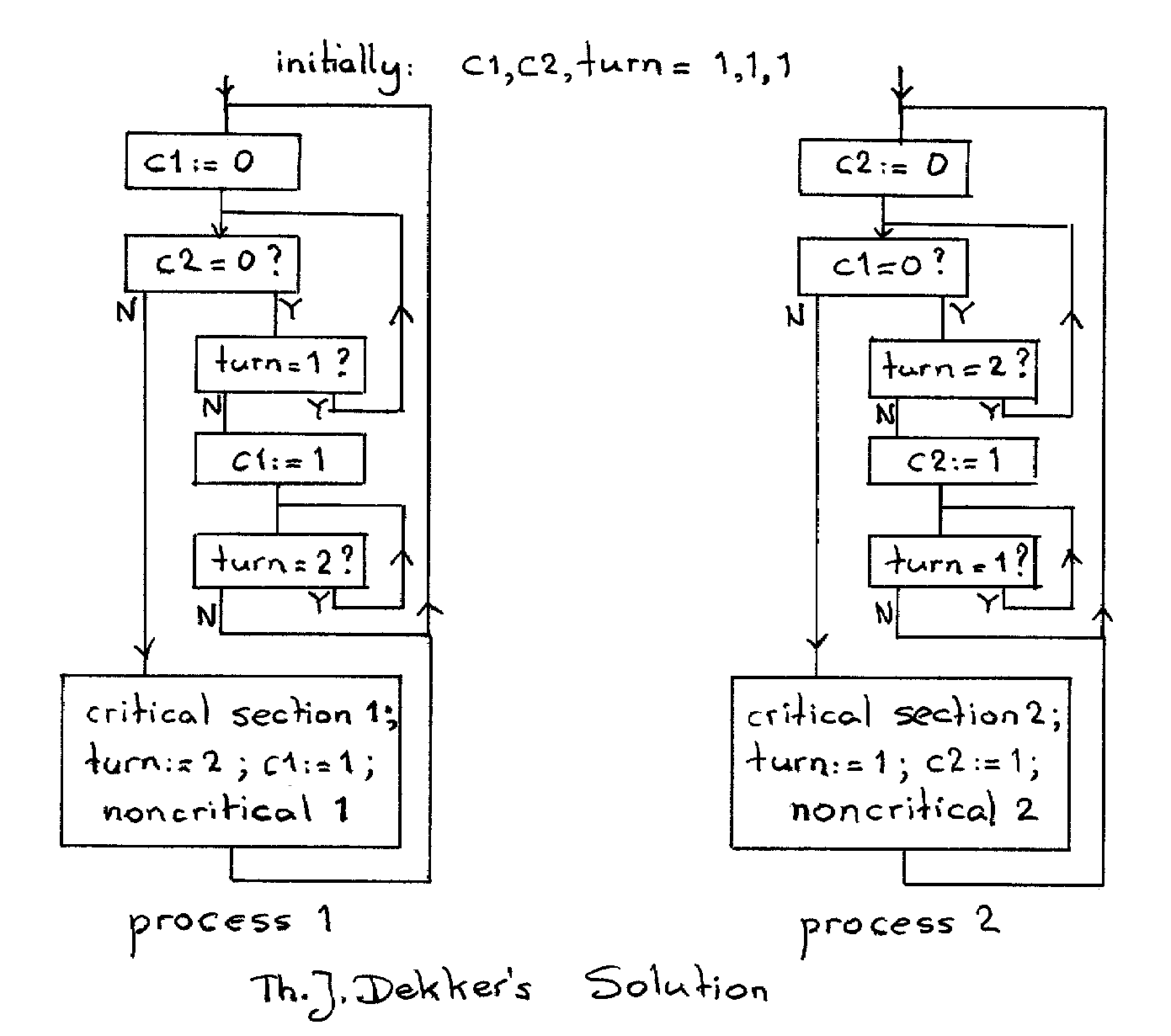Reputation: 189786
Literature/documentation on two cooperating processes using a flag for lock-free shared memory
Is there any other documentation/discussion about the following design pattern (I'm not sure what it is called) from a well-known source? I'm almost 100% sure that the following will manage data safely between two (not more than two) processes, but would feel much better if I could find some more detailed information on why it works from a reputable source.
Suppose I have two processes A and B that are executing in parallel. They share the following data structure (in pseudo-C code):
struct Shared
{
bool ownedByA
Otherstuff otherstuff;
}
I can use the following pair of state machines to manage this shared data safely:
A:
state A.A (data is owned by A), entered on startup:
read/modify/write "otherstuff"
when done, goto A.Adone
state A.Adone
set ownedByA to false
goto state A.B
state A.B (data is owned by B):
if ownedByA is true, goto state A.A
otherwise stay in state A.B
B:
state B.A (data is owned by A), entered on startup:
if ownedByA is false, goto state B.B
otherwise stay in state B.A
state B.B (data is owned by B):
read/modify/write "otherstuff"
when done, go to B.Bdone
state B.Bdone:
set ownedByA to true
goto state B.A
We must ensure A.A's writes to "otherstuff" and A.Adone's write to ownedByA are in strict sequence ordering w/r/t memory visibility. Similarly for B.B and B.Bdone.
at startup:
1. Initialize ownedByA to true, A to the A.A state, B to the B.A state
2. start running state machines
(ensure that 1. happens-before 2.)
Upvotes: 2
Views: 223
Answers (2)
Reputation: 43130
You can try Th. J. Dekker's solution, mentioned by E. W. Dijkstra in his EWD1303 paper.

And then something profound and lovely happened. By analyzing by what structure of argument the proof obligations could be met, the numerical mathematician Th.J. Dekker designed within a few hours
the above solution together with its correctness argument, and this settled the contest.
In the above solution, the pair "c1,c2" implements the mutual exclusion, while "turn" has been introduced to resolve the tie when the two processes simultaneously try to enter their critical sections.
Upvotes: 1
Reputation: 24788
Maybe that's a Dining philosophers problem with only two philosophers and one fork.
http://en.wikipedia.org/wiki/Dining_philosophers_problem
Upvotes: 1
Related Questions
- Locking mechanisms for shared-memory consistency
- Concurrent Software Design
- Locking for multi-threaded hot swapping
- How do I share locks between two processes working on the same region of shared memory?
- Concurrecy: Mutual Exclusion only?
- Relationship between shared memory concurrency algorithms and mutexes/semaphores
- Application area of lock-striping
- shared memory locking and process crash
- Lockfree standard collections and tutorial or articles
- Seeking articles on shared memory locking issues